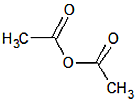11th And 12th > Chemistry
ALDEHYDES AND KETONES MCQs
Total Questions : 30
| Page 1 of 3 pages
Answer: Option C. ->
D<C<B<A
:
C
:
C
Due to steric hindrance
Answer: Option B. ->
CHCl2COOH>CH2ClCOOH>CH3COOH
:
B
:
B
Greater the number of –I groups on the α-carbon, acidic nature increases .
Answer: Option B. ->
pH = 4.5
:
B
:
B
In highly acidic medium, NH2OH forms salt with the acid molecules and loses its ability to act as a nucloephile.
Answer: Option B. ->
3>1>2
:
B
:
B
Greater the tendency for h-bonding, higher is the B.P.

























